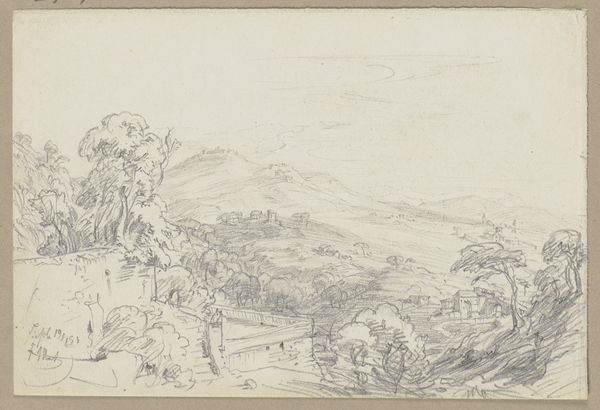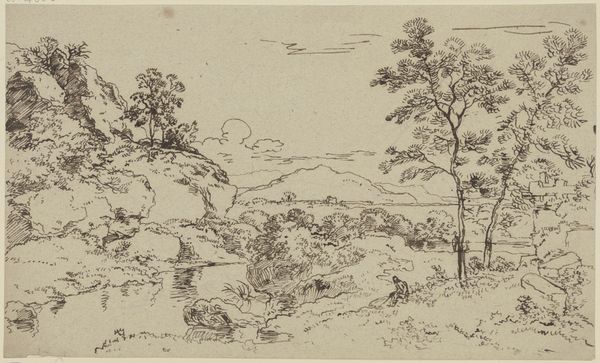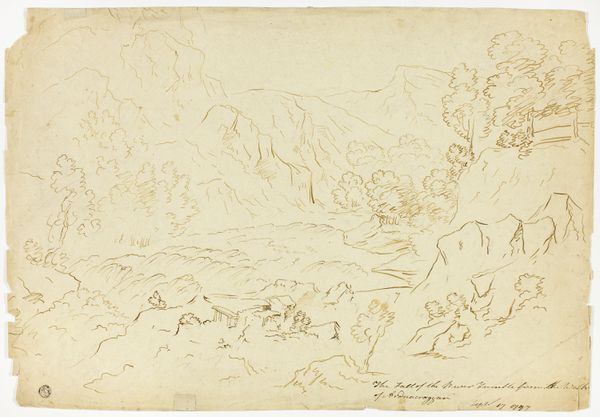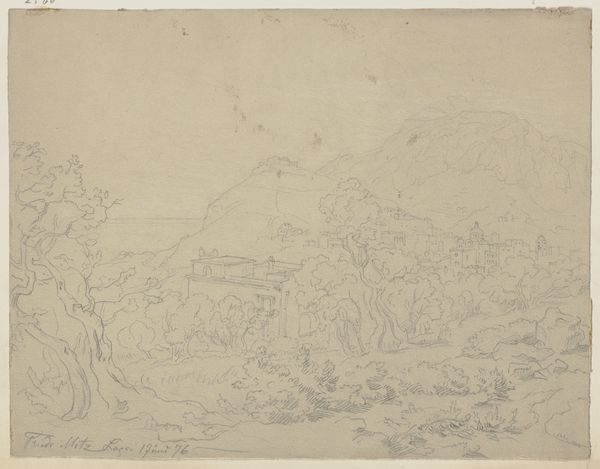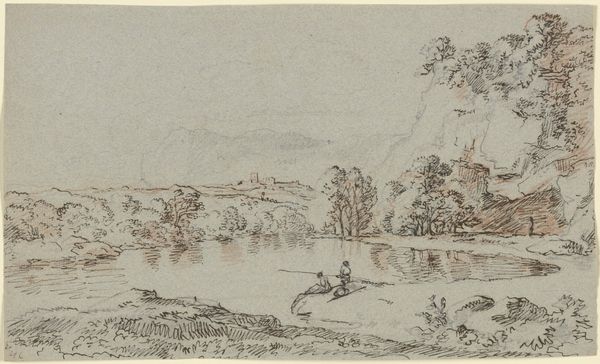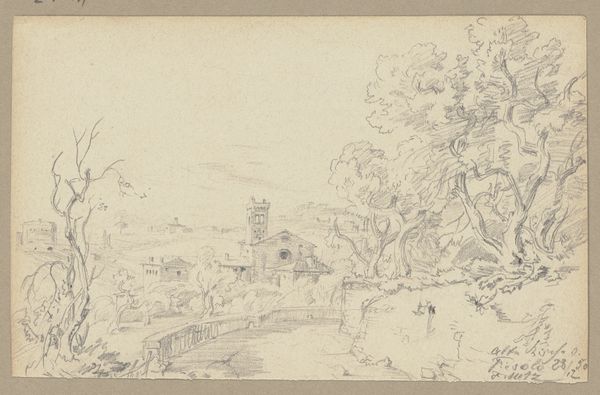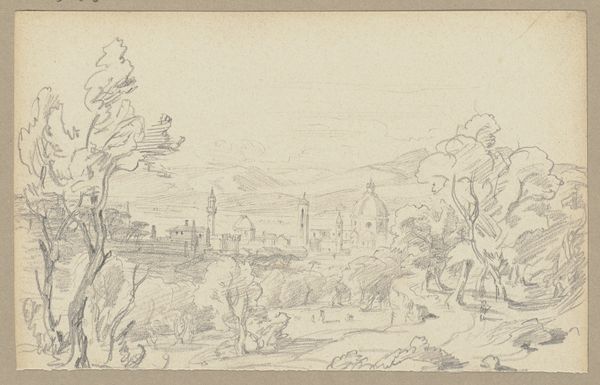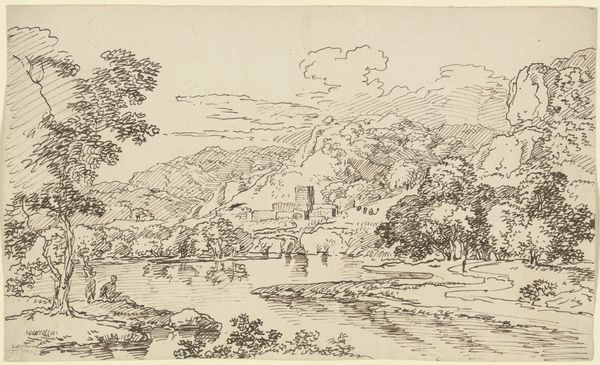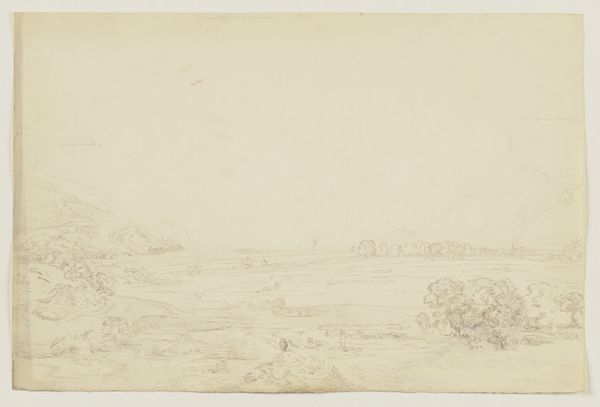
Gebirgige Landschaft an einem Fluß, am linken Ufer mehrere Dörfer mit Kirchen, rechts kommen Vieh und zwei Pferde einen steilen Weg zum Ufer herab, wo ein Schiff angelegt hat, ganz rechts ein Baum, dahinter ein Schloß mit einem Torbogen
0:00
0:00
drawing, etching, ink
#
drawing
#
ink drawing
#
etching
#
landscape
#
etching
#
ink
Copyright: Public Domain
Curator: The work before us is "Mountainous Landscape by a River, with Several Villages with Churches on the Left Bank; on the Right, Cattle and Two Horses Descend a Steep Path to the Bank Where a Ship Has Docked; to the Far Right, a Tree, Behind It a Castle with an Archway" by Franz Hochecker. It is rendered in ink and etching. Editor: The landscape feels placid but also active. The winding road gives the impression of industrious transportation, whereas the church feels eternal. The ink gives it a sort of washed effect. What are we looking at here? What sort of time period might have yielded these sorts of impressions? Curator: Looking closely, we see not just a representation of landscape, but a depiction of social order. The church is literally central but off to the periphery. Consider the visual weight of the castle set behind the prominent tree versus the laborers at the water's edge and the horse path—which directs movement into the whole of the picture. Editor: Absolutely, and it speaks to labor as well. The movement in this landscape seems predicated on the human endeavor. The artist really focused on that interaction of man and land—you see the livestock, the villages. I’d be interested in the materiality of the original work. What kind of paper? What quality of ink allows it to create such fine detail, in the churches or mountains? The contrast is not quite distinct and there is an elegance created through its diffusion. Curator: The interplay of pastoral scenes against signs of authority like the castle invites reflection on the social structures that define even the seemingly most simple of settings. I wonder about how the symbolism connects with contemporary philosophical and social concerns. What's visible, and what are the more profound significances woven into this landscape? Editor: It almost reads as a scene designed to display a type of human triumph. Perhaps an early romantic vision of dominating the environment around us. The light in this artwork, captured with such deliberate mark-making. Curator: Yes, a sentimentality which can come across in etching work. It adds to this sense of memory, preservation and aspiration, all brought together into this singular landscape. Editor: Beautifully put. The process lends the scene a certain timeless quality, capturing an ethos, in a very appealing manner.
Comments
No comments
Be the first to comment and join the conversation on the ultimate creative platform.
